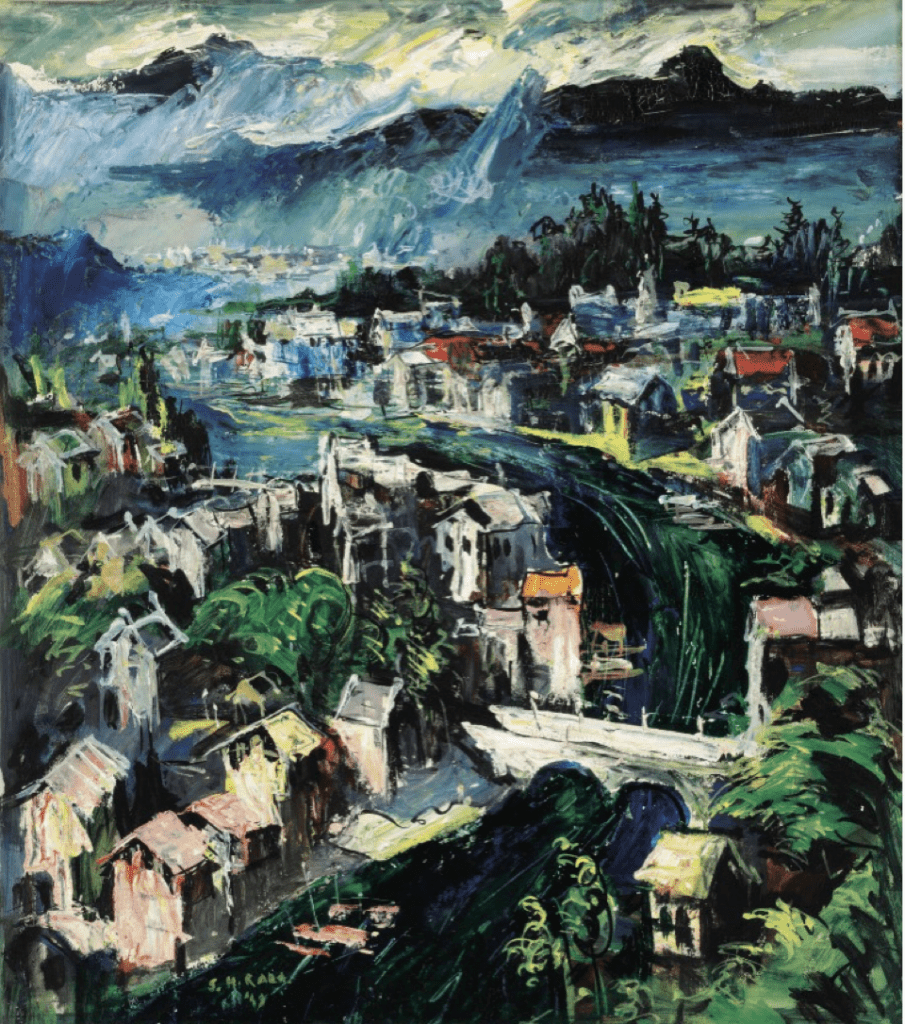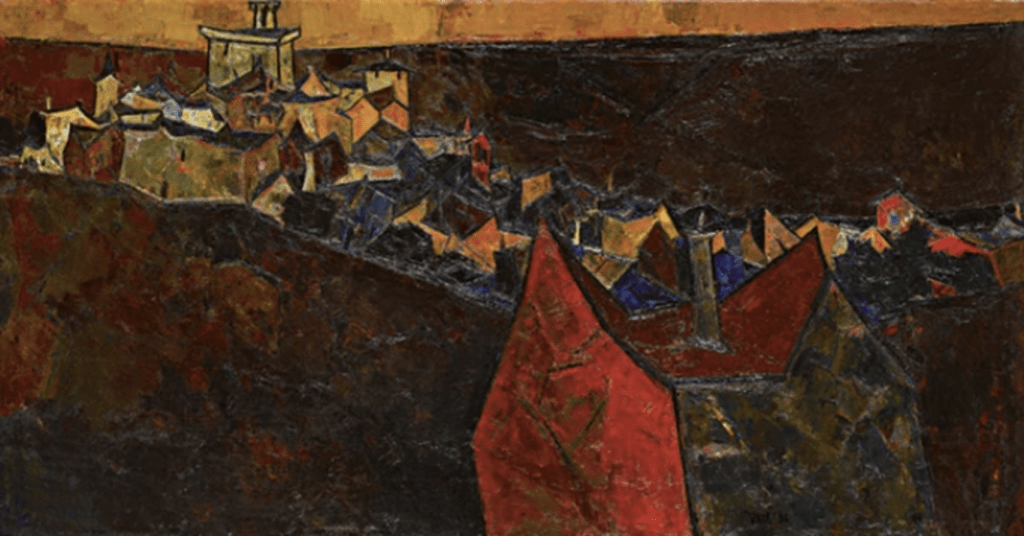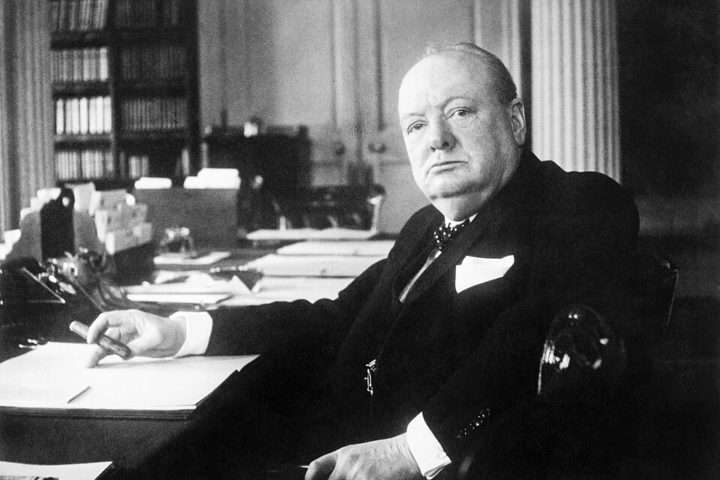Leading modernist Sayed Haider Raza describes his work from the 1980s onward as stemming from “two parallel enquiries.” The first is focused on achieving a “pure plastic order,” while the second delves into the theme of nature. These two aspects merge into a single point, becoming inseparable in the form of the “Bindu” (the dot or epicentre). “The Bindu symbolises the seed, holding the potential for all life.” Although Raza’s name has become almost synonymous with the Bindu, it is noteworthy that the artist’s creativity extends beyond his signature visual language.

Born in February 1922, Sayed Haider Raza hailed from a family of forest rangers in Babariya, Madhya Pradesh. Early childhood was comfortable and stable, with his father being the Deputy Forest Ranger in the then British-owned district. Raza began to show an interest in the arts during his pre-teen years. Observing the same, his parents nourished his artistic interests and enrolled him in art schools. Raza moved to Damoh at the age of 13 and completed his formal school education there at a Government High School. He then received his formal training in painting at the Nagpur School of Art (Nagpur), graduating in 1943. The next four years were spent learning the nuances of oil painting at the prestigious Sir JJ School of Art. Here, he met a talented and brilliant group of young artists, only to come together and form the Bombay Progressive Artists Group in 1948.

From the mid-1950s to mid-1960s, French landscape scenes dominated his work, characterised by gestural brushstrokes and an impasto application of paint. Inspired by works of impressionists like Cezanne, Gauguin and Van Gogh, Raza switched his technique and started to use colour as a tool to construct. During this phase, we notice a switch from watercolour and gouache to oil. This would further allow the artist to create more abstract artworks. The early landscapes were more expressive than abstract, but as soon as the artist began to tweak the technique, one can notice the landscapes became more abstract. At the heart of it all lies Raza’s childhood memories of lush and densely forested villages. In Srinagar, Raza does not paint the dreamy and tranquil hills of Kashmir but chooses to paint the hustle and bustle of the capital city, peeking through the lush foliage.

In 1948, he met with the renowned French photographer Henri Cartier Bresson during his trip to Kashmir. The photographer advised the artist to scrutinise the structure in the paintings of Paul Cezanne. This advice would further change the trajectory of Raza’s visual vocabulary. After receiving a French Government Scholarship in 1950, he left for Ecole Nationale des Beaux-Arts, Paris, where he was awarded the Prix de la Critique in 1956. Though he finished his education in 1953, he chose to remain in Paris, as he thought his works would receive appreciation from European art lovers. It was during this time that we notice a riveting change in his practice where the artist paints his travels to the south of France. These paintings are set against a timeless space, devoid of human presence. The perspective used also varies from aerial to frontal. The predominant use of crimson hues in Ville Provencale (1956) hints at the burning hour, where the sunlight paints the land in similar shades.
Though best known for his geometric abstraction, Raza is a wonderful example of how we often tend to think of an artist stuck with their singular and one-dimensional visual language. To the untrained eye, Raza only painted variations of a dot throughout his artistic career. However, the talented modernist was a lot more than an abstractionist. His engagement with nature and landscape, blended with his mastery of colours is truly what makes Raza a leading figure in Indian art.











